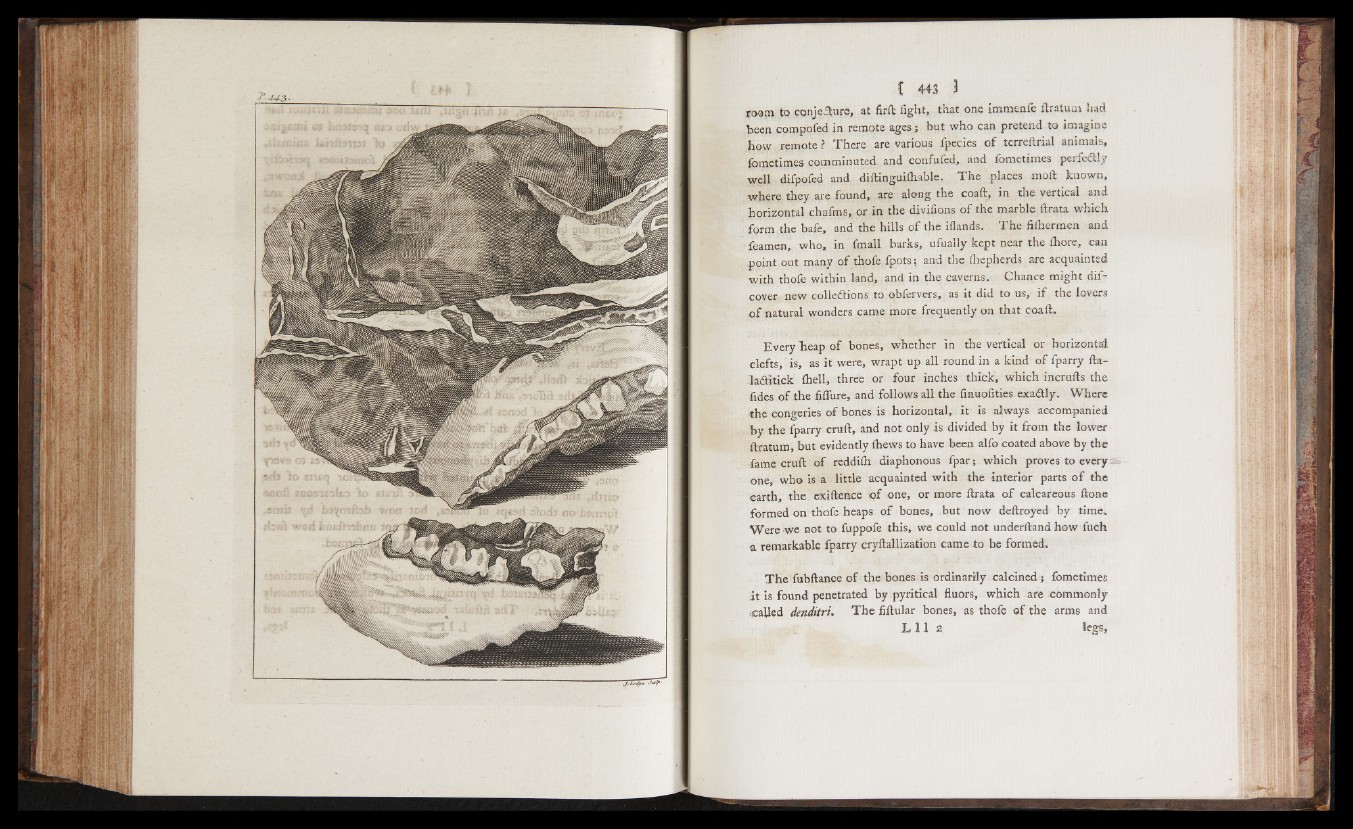
*ib v ■ i l i f f t f
srfj to tonr*?’'.'
il aWI
..«ait '{if bs^drfteb wo
rf?o) wod fcncfiTsfcf toy ^§1
eNpct
room to conjecture, at firft % h t, that one immenfe ftratum bad
been corapofed in remote ages j but who can pretend to imagine
how remote ? There are various fpecies o f terreilrial animals,
fometimes comminuted and confufed, and fometimes per feet ly
well difpofed and diftinguiihable. T he places moil known,
where they are found, are along the coaft, in the vertical and
horizontal chafms, or in the divifions-of the marble ilrata which
form the bafe, and the hills o f the iflands. The fiihermen and
feamen, who, in fmall barks, ufually kept near the ihore, can
point out many o f thofe fpots; and the (hepberds are acquainted
with thofe within land, and in the caverns. Chance might discover
new collections to obfervers, as it did to us, i f the lovers
o f natural wonders came more frequently on that coaft.
Every heap o f bones, whether in the vertical or horizontai
clefts, is, as it were, wrapt up all round in a kind o f fparry fta-
la&itick ihell, three or four inches thick, which incrufts the
fides of the fiifure, and follows all the (inuofities exaitly. Where
the congeries of bones is horizontal, it is always accompanied
by the fparry cruft, and not only is divided by it from the lower
ftratum, but evidently fhews to have been alfo coated above by the
fame cruft o f reddiih diaphonous fparj which proves to every
one, who is a little acquainted with the interior parts o f the
earth, the exi(fence o f one, or more ftrata o f calcareous ftone
formed on thofe heaps o f bones, but now deftroyed by time.
Were we not to fuppofe this, we could not underftand how fuch
a remarkable fparry cryftallization came to be formed.
T he fubftance of the bones is ordinarily calcined ; fometimes
i t is found penetrated by pyritical fluors, which are commonly
«ailed denditri. T he fiftular bones, as thofe o f the arms and
L l l 2 legs,